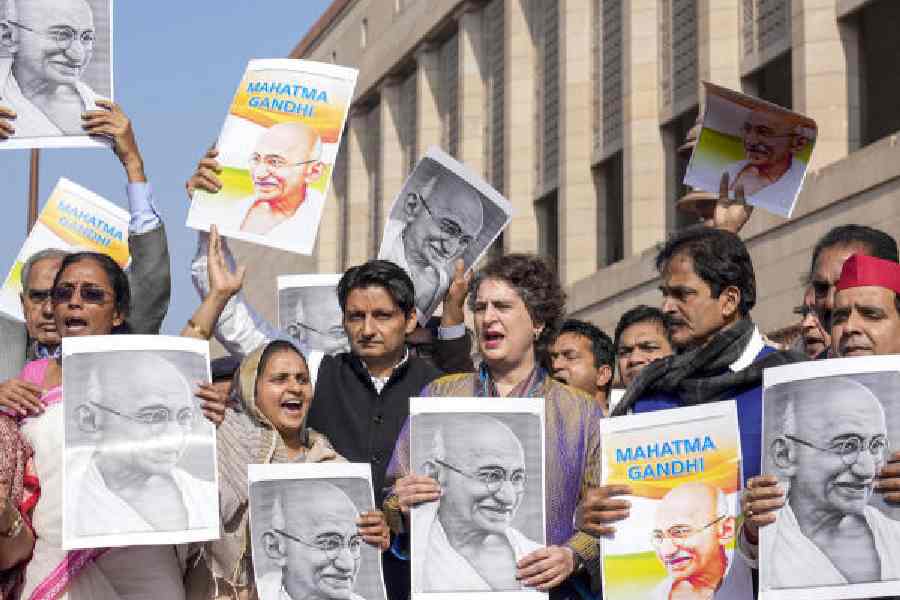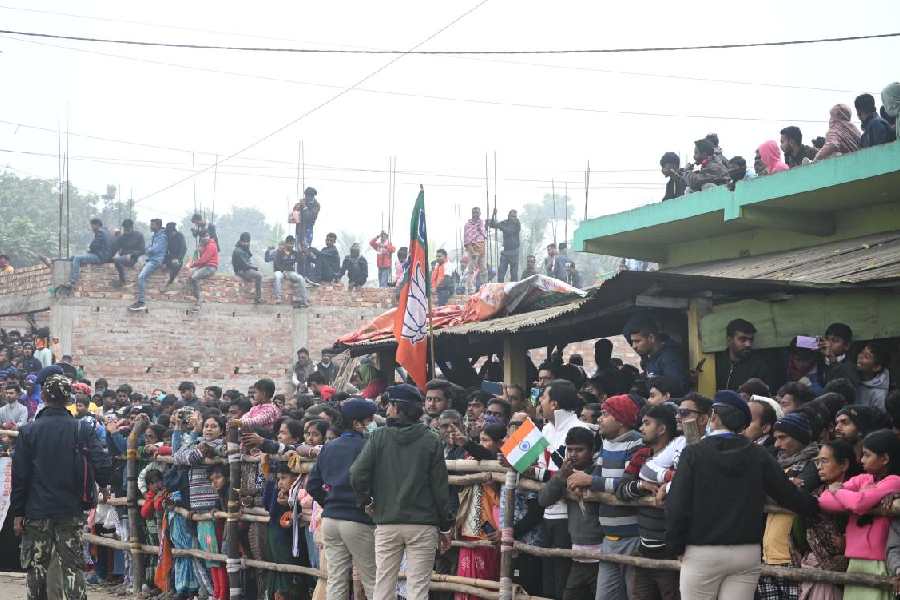 |
| Children admitted to Patna Medical College and Hospital with suspected encephalitis. (PTI) |
Muzaffarpur, June 14: Disease detectives today collected wild rats and mosquitoes in a scramble to fathom the cause of the mystery outbreak that has killed 120 children in three districts of Bihar over the past fortnight.
The outbreak investigators from the National Centre for Disease Control (NCDC), New Delhi, also probed the lifestyle and food habits of survivors — two children in villages near Mushahri who had fallen ill but survived.
Doctors have classified the disease as acute encephalitis syndrome and believe that it is caused by an infectious agent that remains to be identified. A similar outbreak of acute encephalitis syndrome had also occurred in Bihar last year.
“We really do not know what is causing this,” said Milind Gore, a senior scientist with the National Institute of Virology, Pune, who has investigated encephalitis in Uttar Pradesh and Bihar. “What we do know is that this has very high mortality — up to 50 per cent,” he said.
The investigations thus far have ruled out Japanese encephalitis, a viral infection spread through the bites of mosquitoes, as well as encephalitis caused by enteroviruses, typically spread through contaminated food or water.
A scientist who is familiar with the investigations said it was difficult to pinpoint an unidentified infectious agent when the most likely microbes have been ruled out. “We don’t know what to look for,” the scientist said.
A six-member team from the NCDC visited several villages near Mushahri this afternoon, spending more than two hours in Badur Chapra, Mushahri and Gangapur hamlets, and met two children who had been cured after a week-long treatment during last year’s outbreak.
The experts studied case histories of the two children, noted down their daily lifestyles, and quizzed their parents about their food habits. They also collected wild rats, mosquitoes, and other insects in what could be an attempt to look for candidate viruses.
Animals or birds may serve as natural reservoirs of viruses that reach humans through mosquito bites. But scientists do not know yet what virus — if at all, this is a viral infection — might be causing the outbreak in Bihar.
But that hasn’t stopped government agencies from blaming others for the outbreak.
After the outbreak last year, experts from the NIV, Pune, had asked the Bihar government to spray a chemical that would kill mosquitoes — under the assumption that whatever had caused the illness was transmitted through mosquito bites.
“I am shocked that the recommendation for spraying in susceptible districts of Bihar has not been done,” said B.B. Tandle, a senior scientist with the NIV, Pune, who visited Muzaffarpur with two other scientists from the institute.
The Bihar government, however, is not ready to take the blame.
The health minister, Ashwini Kumar Choubey, has accused the Centre for stalling the state’s plan to spray the chemical in the susceptible districts East Champaran, Gaya, Muzaffarpur, Saran, Sheohar and Vaishali earlier this year.
The Union health ministry’s National Vector Borne Disease Control Programme had failed to release Rs 2.4 crore requested by Bihar for procurement of the chemicals on time, state health sources said. But the joint director of the NVBDCP has said the state government had sent the budget late. The agency has since released Rs 1.8 crore, and the amount is expected to be deposited in the state account within the next few days.










